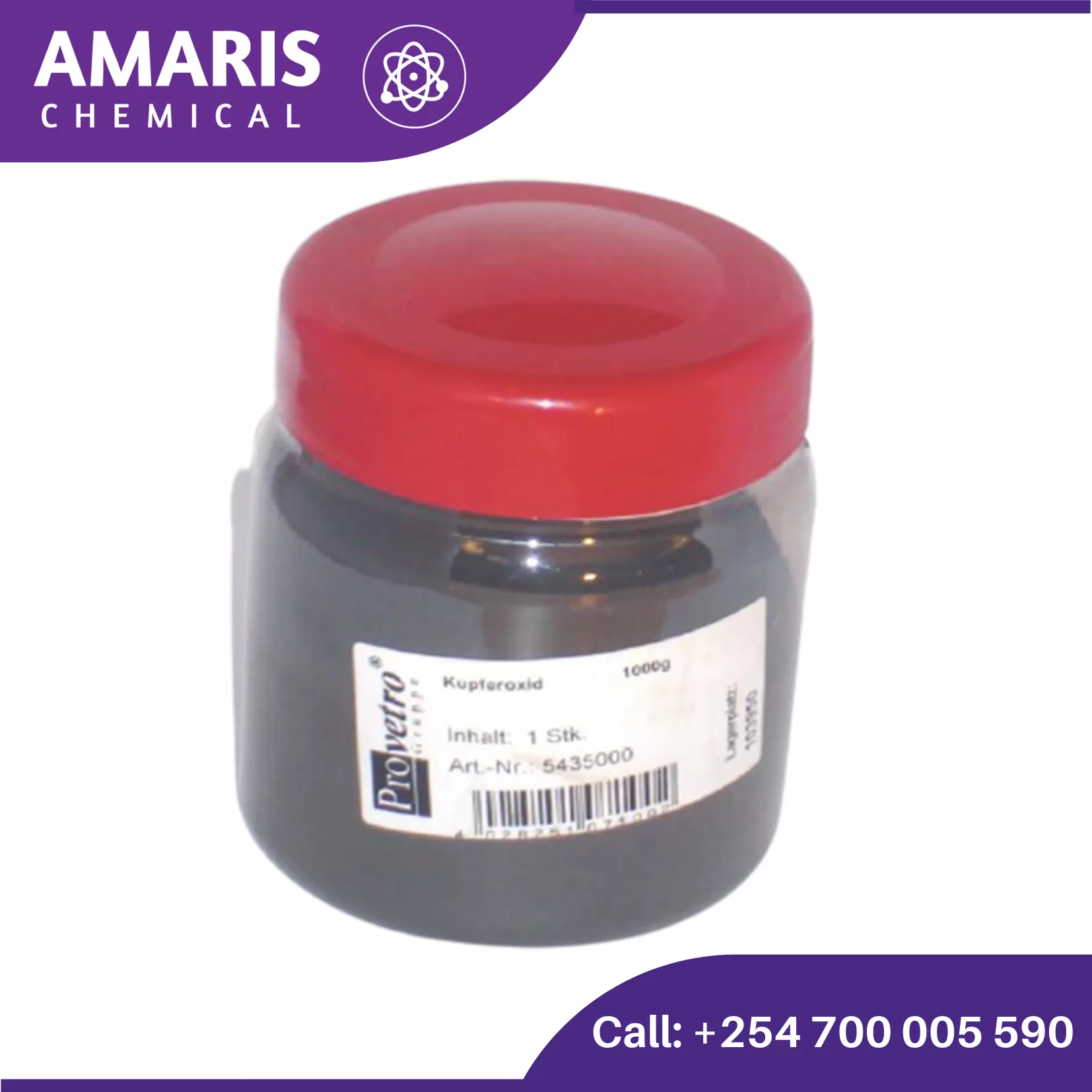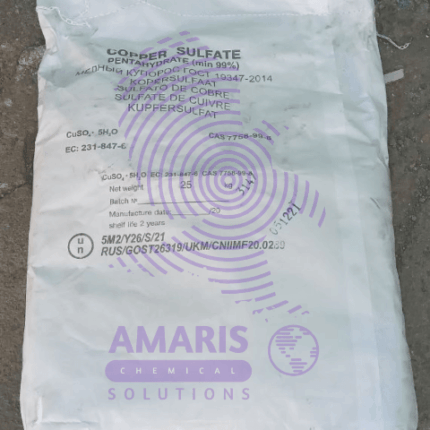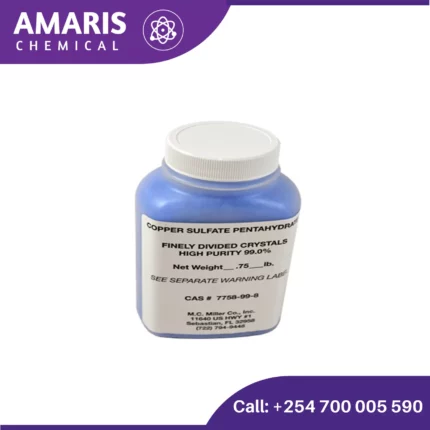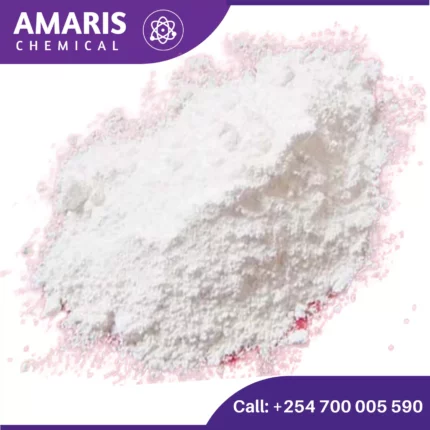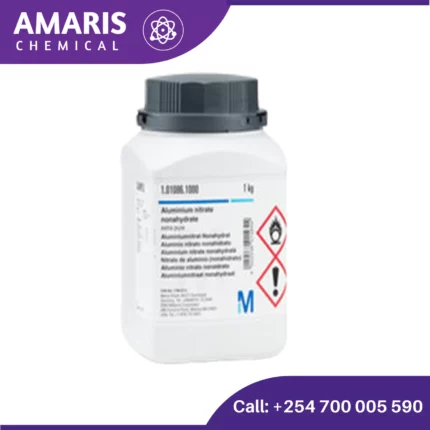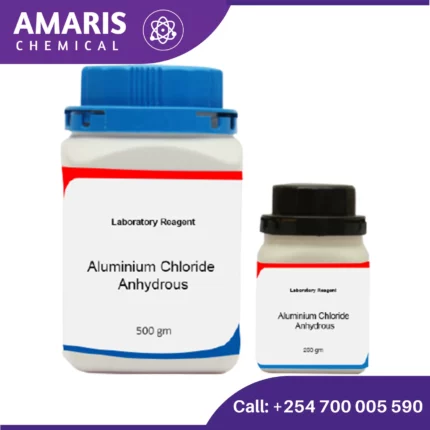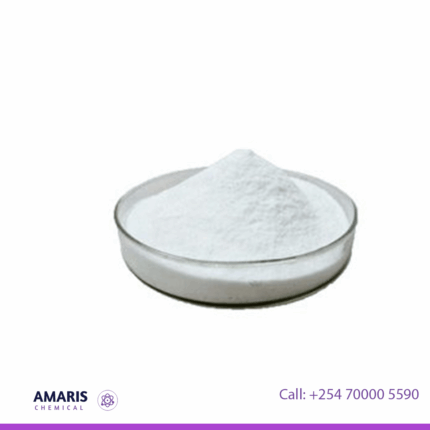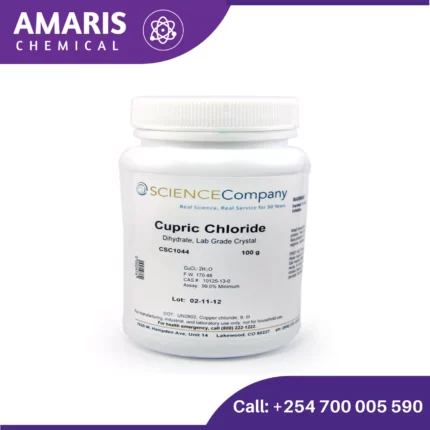
Cupric Chloride 250gm
KSh2,500.00 Original price was: KSh2,500.00.KSh2,300.00Current price is: KSh2,300.00.
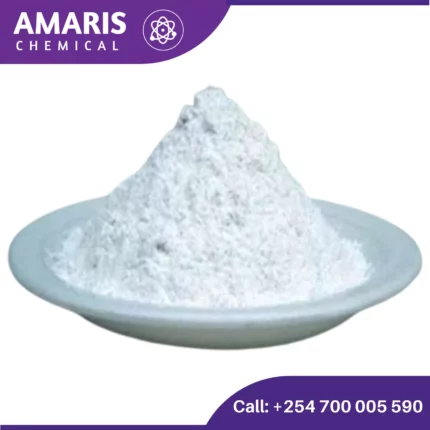
Cupric Sulphate Anhydrous
KSh2,500.00 Original price was: KSh2,500.00.KSh2,300.00Current price is: KSh2,300.00.
Cupric Oxide 100gm
KSh2,500.00 Original price was: KSh2,500.00.KSh2,300.00Current price is: KSh2,300.00.
Whatsapp Order
Cupric oxide, also known as copper(II) oxide, is a black solid with the chemical formula CuO. It is a significant compound of copper and has various applications in different fields. Here are some key points about cupric oxide:
Properties:
- Chemical Formula: CuO
- Appearance: Black or dark brown powder.
- Molecular Weight: 79.545 g/mol
- Melting Point: 1,326 °C (2,419 °F)
- Density: 6.315 g/cm³
- Solubility: Insoluble in water but soluble in acids.
Production:
Cupric oxide can be produced by several methods, including:
- Thermal Decomposition: Heating copper(II) nitrate, copper(II) carbonate, or copper(II) hydroxide in the absence of oxygen.
- Direct Oxidation: Heating metallic copper in the presence of oxygen.
SKU:
ACS45818CHEM0
Category: Analytical Reagents
Description
Table of Contents
ToggleUses of Cupric Oxide
1. Chemical Reactions and Experiments:
- Redox Reactions: Cupric oxide is often used in experiments to demonstrate redox reactions, where it acts as an oxidizing agent. For example, it can be reduced to copper metal by heating with hydrogen gas.
- Thermal Decomposition: Used to study thermal decomposition reactions. Cupric oxide can be obtained by heating copper carbonate or copper hydroxide.
2. Analytical Chemistry:
- Quantitative Analysis: Employed in gravimetric analysis to determine the concentration of copper in samples. Cupric oxide can be weighed before and after reactions to calculate the amount of copper present.
- Reagent in Tests: Acts as a reagent in various qualitative tests, such as detecting reducing sugars. Cupric oxide reacts with reducing sugars to form a red precipitate of copper(I) oxide (Cu2O).
3. Catalysis Studies:
- Catalyst Testing: Used as a catalyst in laboratory-scale reactions to study catalytic processes and reaction mechanisms. It can catalyze the oxidation of organic compounds and other reactions.
4. Synthesis of Compounds:
- Preparation of Other Copper Compounds: Cupric oxide is a precursor in the synthesis of other copper-containing compounds, such as copper sulfate (CuSO4) and copper acetate.
- Nanomaterials: Used in the synthesis of copper oxide nanoparticles, which have applications in electronics, sensors, and antimicrobial agents.
5. Material Science:
- Ceramics and Glass: Studied for its properties in ceramics and glass production. Cupric oxide is used to impart black and other colors to glass and ceramic materials.
- Superconductors: Investigated for its role in high-temperature superconductors, such as those based on cuprate materials.
6. Electronics and Semiconductor Research:
- Thin Films: Used in the fabrication of thin films for electronic devices. Cupric oxide thin films are studied for their electrical properties and potential use in solar cells and sensors.
- Photovoltaics: Research into its application in photovoltaic cells, where it can be used as an absorber material due to its semiconducting properties.
7. Educational Demonstrations:
- Demonstration of Chemical Principles: Frequently used in educational laboratories to demonstrate basic chemical principles, such as oxidation-reduction reactions, stoichiometry, and properties of metal oxides.
- Lab Safety and Handling: Teaching proper laboratory techniques and safety protocols when handling chemicals.
8. Environmental Chemistry:
- Pollution Control Studies: Used in experiments related to pollution control and environmental remediation. For example, it can be used to study the removal of sulfur dioxide from industrial emissions through chemical reactions.
You may also like…
Ammonium Cupric Chloride
Ammonium cupric chloride is a chemical compound composed of copper(II) (Cu²⁺), ammonium (NH₄⁺), and chloride (Cl⁻) ions. It appears as a greenish or yellowish crystalline solid, depending on its hydration state and structure.
Majorly, ammonium cupric chloride is used in research and specialized industrial applications. It serves as a catalyst in organic synthesis, where copper(II) facilitates oxidation or coupling reactions. In electroplating, it can act as a copper ion source for depositing thin metallic layers.
Copper sulfate 25kg
Copper sulfate, also known as cupric sulfate or copper (II) sulfate, is a chemical compound composed of copper, sulfur, and oxygen. Its chemical formula is CuSO4, and it appears as blue crystals or a white powder. Copper sulfate is commonly used as a fungicide, herbicide, and pesticide, as well as a laboratory reagent and a catalyst in chemical reactions. It is also used in the manufacture of copper compounds, in electroplating, and in the preparation of pigments for paints and dyes.
Cupric Carbonate 500gm
Cupric carbonate, also known as copper(II) carbonate, is a chemical compound with the formula CuCO3. It exists in nature as several different minerals, including malachite and azurite, which are valued for their vibrant green and blue colors, respectively. Cupric carbonate can also be synthesized in the laboratory.
In its natural form, cupric carbonate is often used as a pigment in paints and dyes due to its striking color. It has also been used historically as a source of copper in various applications, including as a fungicide in agriculture.
Cupric carbonate is insoluble in water, but it can react with acids to form soluble copper salts. Additionally, it can decompose upon heating to release carbon dioxide and form copper(II) oxide.
It's important to handle cupric carbonate with care, as copper compounds can be toxic if ingested or inhaled in large quantities.
Cupric Chloride 250gm
Cupric chloride, also known as copper(II) chloride, is a chemical compound with the formula CuCl₂. It appears as a yellowish-brown powder in its anhydrous form and turns into a blue-green crystalline solid when hydrated. This compound is highly soluble in water, forming a blue solution.
Properties:
- Chemical Formula: CuCl₂
- Molecular Weight: 134.45 g/mol
- Appearance: Yellowish-brown powder (anhydrous), blue-green crystals (hydrated)
- Solubility: Highly soluble in water and ethanol
Cupric Sulphate Anhydrous
Cupric sulfate anhydrous refers to the form of copper(II) sulfate that does not contain water molecules in its crystal structure. It is used similarly to the hydrated form (cupric sulfate pentahydrate) in laboratory settings, often in analytical chemistry and as a source of copper ions in various reactions and processes.
Cupric Sulphate Pentahydrate
Related products
Aluminum Ammonium Sulphate
Aluminum ammonium sulfate, also known as ammonium alum or just alum, is a chemical compound with the formula (NH4)Al(SO4)2·12H2O. It's a white crystalline solid commonly used in water purification, leather tanning, and as a mordant in dyeing textiles.
In water purification, alum acts as a coagulant to remove impurities by causing suspended particles to clump together, making it easier for filtration to remove them. In leather tanning, it helps to stabilize the leather by tightening the collagen fibers. And in dyeing textiles, alum helps the dye adhere to the fabric.
However, it's important to note that excessive exposure to aluminum compounds like alum can be harmful, so it's typically used with caution and proper safety measures.
Aluminum Hydroxide 250gm
Aluminium hydroxide is a chemical compound with the formula Al(OH)3. It is an inorganic compound that is commonly used as an antacid to neutralize excess stomach acid, as well as a component in the manufacture of various products, such as ceramics, paper, and cosmetics. It is a white, powdery substance that is insoluble in water and has a low toxicity. When heated, it decomposes to produce aluminium oxide, or alumina, which is used in the production of aluminium metal.
Aluminum Nitrate 500gm
Aluminum nitrate is a chemical compound with the formula Al(NO3)3. It's a salt composed of aluminum and nitrate ions. It's commonly encountered as a hydrate with varying numbers of water molecules associated with each aluminum nitrate formula unit. It's soluble in water and is often used in various industrial processes, including as a mordant in dyeing fabrics and in the production of aluminum oxide. Additionally, it's used in some chemical reactions and as a component in some types of rocket propellants.
Ammonium Chloride 500gm
Ammonium chloride is an inorganic compound with the chemical formula NH4Cl. It is a white crystalline salt that is highly soluble in water and has a salty taste. Ammonium chloride is often used in various industrial and laboratory applications, including as a flux in soldering, as a nitrogen source in fertilizers, and as a component in dry cell batteries. It can also be used in medicine as an expectorant to help thin and loosen mucus in the respiratory system
Ammonium Dichromate 500gm
Anhydrous Aluminum Chloride
Anhydrous aluminum chloride, often represented as AlCl3, is a chemical compound composed of aluminum and chlorine. "Anhydrous" means it lacks water molecules in its structure. It's a white or pale yellow solid that is highly hygroscopic, meaning it readily absorbs moisture from the air. This property makes handling it a bit tricky since it can form a solution with water vapor in the air, turning into a fuming liquid.



 LABORATORY EQUIPMENT & APPARATUS
LABORATORY EQUIPMENT & APPARATUS
 Fertilizers
Fertilizers Plant Growth Regulators
Plant Growth Regulators Soil Conditioners
Soil Conditioners Animal Feed Additives
Animal Feed Additives Biostimulants
Biostimulants Dough Conditioners
Dough Conditioners Flour Treatments
Flour Treatments Fat Replacers
Fat Replacers Preservatives (baking)
Preservatives (baking)
 Surfactants (cleaning)
Surfactants (cleaning) Builders
Builders Bleaching Agents
Bleaching Agents Enzymes
Enzymes Solvents (cleaning)
Solvents (cleaning) Fragrances
Fragrances

